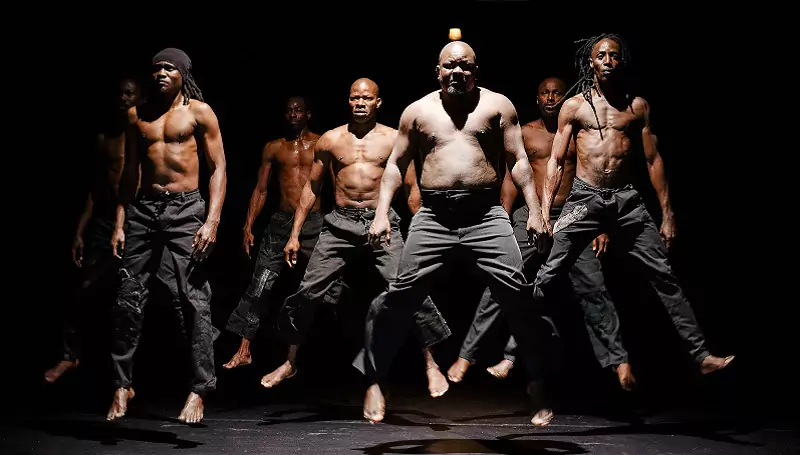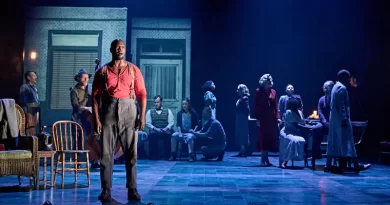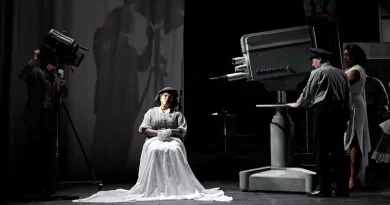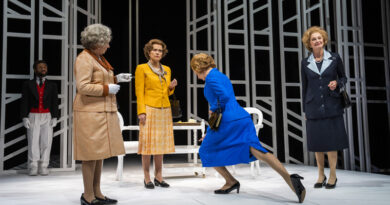“Full Moon”, Euroregional Theatre Festival in Timisoara – TESZT
Jeremy Malies in Romania
25 May 2024
Quiz Harold Pinter as to the meaning of one of his plays and he’d throw the ball back, asking what you thought it meant. Whatever you said – however outlandish – you’d be told: “Well, that’s what the play means!”
Full Moon, I think, shows us multiple versions of Adam in an ecumenical Genesis. There are seven Adams who are dancers from Paris-based company Atelier 3+1. In charge of the cosmic bowling balls is company founder Josef Nadj. Masked, and sometimes cutting a Prospero-like figure with his stave, Nadj seems to be conjuring up the other dancers as if they were his familiars.
Just occasionally (and it’s usually mime of course) a show will have more to say to the widest possible range of people than anything else at an arts event. This is it. Marceau-trained Nadj allows a few words to intrude at the end, but essentially the piece is the dancers working through the eight phases of a lunar month as they are beset by life’s challenges.
In no particular order, I believe I saw the men: create tools; divine for water; defend themselves against a flood; improvise medicines; support somebody through an illness; confront fear created by a solar eclipse and call up spirits. Their movements are incessant, hypnotizing, and they often use their own bodies for percussion. Drumming develops from simple patterns to New Orleans second line marches. A treble recorder is used as counterpoint to the bass drumming towards the end.
Nadj uses lunar movements and veneration of the moon to propel the dancers on a path from nomad to settler. He moves us from ancient to modern sensibilities as the drumming becomes more intricate. At no time does Nadj (the only Caucasian on stage) reveal his face; he is masked with the headpiece at the end resembling the monolithic human figures of Polynesia. But none of this is tricksy and it never descends into clunky symbolism. And I certainly didn’t detect a critique of imperialism as a theme. A post-imperialist lens this ain’t. How refreshing!
There is no set though we have the sense that the men are moving across a huge tract of land with varied wildlife. The end is inventive as Nadj swings a humming device on a rope (more planetary movement?) until it comes to rest. At all times, he has been in charge of the considerable energy in the room and is now winding it down.
Has he imagined the dancers? Has he been summoning his ancestors? Have the dancers imagined him? Have they all been under the effect of a drug? Have they dispensed a little of the drug to us, the rapt audience?
The only extended theme is the relationship between these dancers and the environment in which they live. What I do know is that this piece of theatre is in no way prescriptive, and the men are presented as beings with huge potential that we are not going to see in the hour that we are with them. So, we are back with Pinter. And there is a mischievous modern (early twentieth-century?) reversal coda that should be left firmly under wraps.









